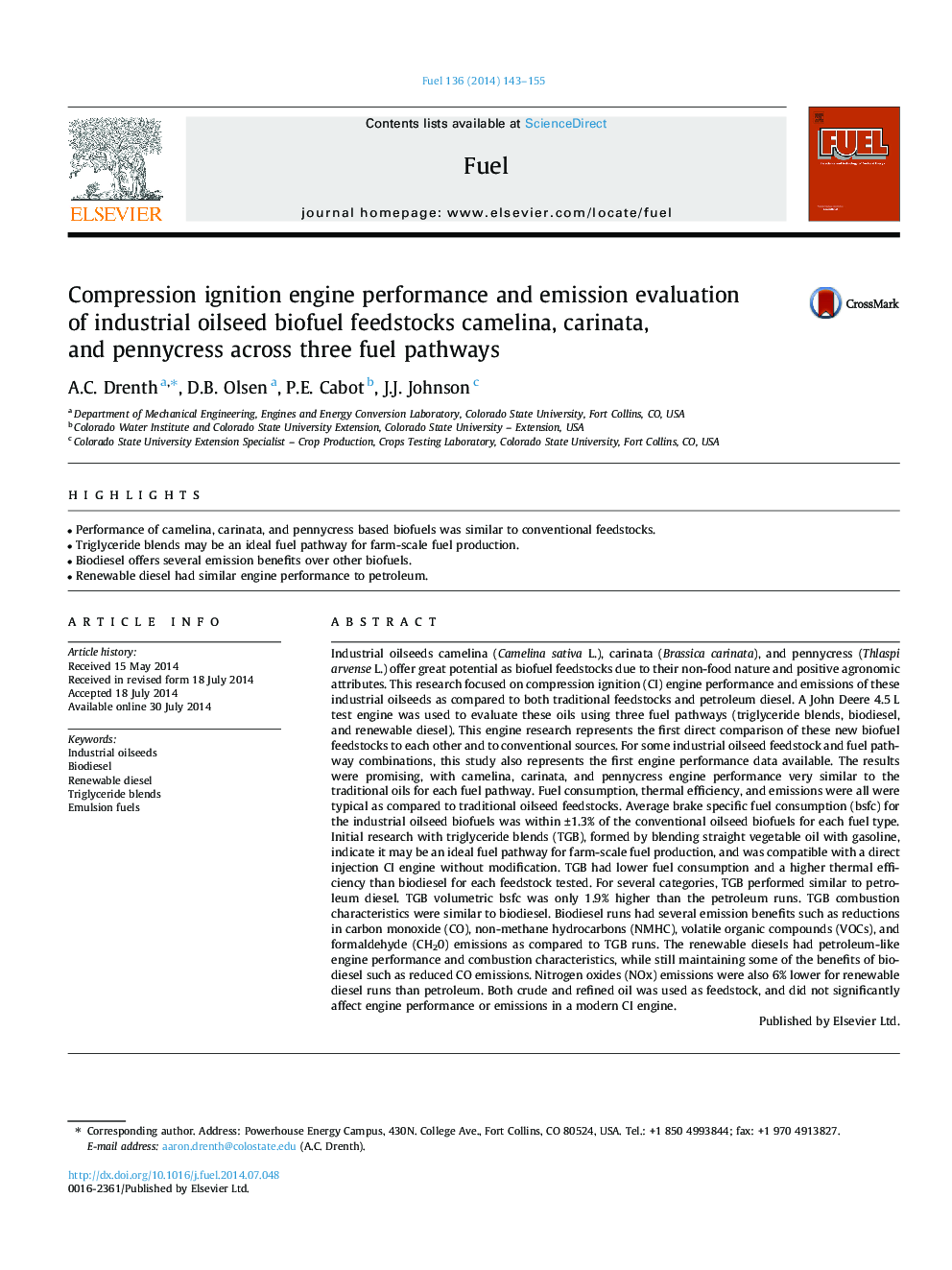| Article ID | Journal | Published Year | Pages | File Type |
|---|---|---|---|---|
| 206084 | Fuel | 2014 | 13 Pages |
•Performance of camelina, carinata, and pennycress based biofuels was similar to conventional feedstocks.•Triglyceride blends may be an ideal fuel pathway for farm-scale fuel production.•Biodiesel offers several emission benefits over other biofuels.•Renewable diesel had similar engine performance to petroleum.
Industrial oilseeds camelina (Camelina sativa L.), carinata (Brassica carinata), and pennycress (Thlaspi arvense L.) offer great potential as biofuel feedstocks due to their non-food nature and positive agronomic attributes. This research focused on compression ignition (CI) engine performance and emissions of these industrial oilseeds as compared to both traditional feedstocks and petroleum diesel. A John Deere 4.5 L test engine was used to evaluate these oils using three fuel pathways (triglyceride blends, biodiesel, and renewable diesel). This engine research represents the first direct comparison of these new biofuel feedstocks to each other and to conventional sources. For some industrial oilseed feedstock and fuel pathway combinations, this study also represents the first engine performance data available. The results were promising, with camelina, carinata, and pennycress engine performance very similar to the traditional oils for each fuel pathway. Fuel consumption, thermal efficiency, and emissions were all were typical as compared to traditional oilseed feedstocks. Average brake specific fuel consumption (bsfc) for the industrial oilseed biofuels was within ±1.3% of the conventional oilseed biofuels for each fuel type. Initial research with triglyceride blends (TGB), formed by blending straight vegetable oil with gasoline, indicate it may be an ideal fuel pathway for farm-scale fuel production, and was compatible with a direct injection CI engine without modification. TGB had lower fuel consumption and a higher thermal efficiency than biodiesel for each feedstock tested. For several categories, TGB performed similar to petroleum diesel. TGB volumetric bsfc was only 1.9% higher than the petroleum runs. TGB combustion characteristics were similar to biodiesel. Biodiesel runs had several emission benefits such as reductions in carbon monoxide (CO), non-methane hydrocarbons (NMHC), volatile organic compounds (VOCs), and formaldehyde (CH20) emissions as compared to TGB runs. The renewable diesels had petroleum-like engine performance and combustion characteristics, while still maintaining some of the benefits of biodiesel such as reduced CO emissions. Nitrogen oxides (NOx) emissions were also 6% lower for renewable diesel runs than petroleum. Both crude and refined oil was used as feedstock, and did not significantly affect engine performance or emissions in a modern CI engine.
